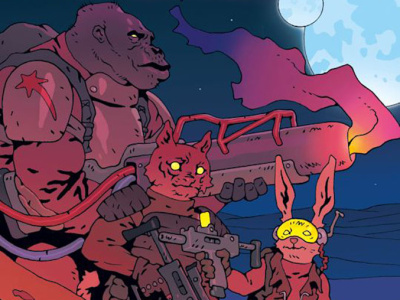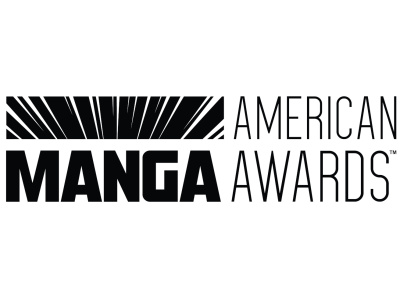
We sat down with graphic novelist Gene Luen Yang and his editor Mark Siegel of First Second at the recent American Library Association convention in Washington, D.C. (see 'ALA Conference Report'), to talk about American Born Chinese and Yang's future plans.
Let's start by talking a little bit about the reaction to American Born Chinese. We did a story last December about the reaction to the National Book Award nomination and what was happening to sales (see 'First Second's Mark Siegel on 'American Born Chinese''). At that time I think sales had just hit 25,000, where are you now and where are you finding the best response?
Gene Luen Yang: The response has been absolutely phenomenal, especially from librarians and educators. I think they respond especially well to this new crop of more literary minded graphic novels that I'm lucky enough to be a part of.
In what ways is it being used in the educational environment?
Yang: I was asked to be a guest speaker at a new media writing course in Stanford as well as a comics and literature course at
Is it also showing up in school libraries for younger ages?
Yang: Yes it is. I've also been asked to participate in online discussions about American Born Chinese. One was at a middle school, and another was in a 9th grade English class. In both of those environments, the focus was more on the ethnic issues.
You mentioned earlier that here we are at the
Yang: I've done two graphic novels before this, one was called Gordon Yamamoto and the King of the Geeks, the second one was Loyola Chin and the San Peligran Order. Those were both done as issues first, so they were each three issues long. I received the Xeric Grant for Gordon, and then I did Loyola as mini-comics, as photocopy comics. Those were collected later on by Slave Labor Graphics and put out in 2000 and 2001.
So there was a pretty big gap between those and American Born Chinese. Were you working on American Born Chinese that whole time or doing other things?
Yang: I was working on American Born Chinese during that whole time, but I also did a couple of other things. I did an adaptation of The Rosary Prayer, which is a very popular Catholic devotional prayer, and that was published by a group of nuns in
So The Rosary Prayer book will be a hard find for completists?
Yang: It's still in print; it's still being sold through Catholic Bookstores.
And what are you working on next?
Yang: I am working on a short story collection with Derek Kirk Kim. The first story is that two issue story we did for Image Comics a while ago. Then we're adding two more stories to it, so he's doing all the heavy lifting, he's doing all the art and I'm doing the drawing.
Mark Siegel: Derek Kirk Kim is doing it in three really different styles. It's not so much like a showcase, but it is this kind of virtuoso tour-de-force graphic project. Gene has these three stories that have in common this paradigm shift--turn everything on its head in three different ways; it's a very exciting project to me. In some ways it builds on what American Born Chinese does in terms of the plot surprises, but it's also very much in its own right a very surprising set of stories, and then there's more beyond that on the horizon.
When will it be out, and how many pages?
Yang: I don't know about the page count, because Derek and I are still working on the final book, depending on how he chooses to lay it out, the page count can vary greatly. It will be out Spring of 09.
Siegel: And no less than 144 pages, probably 192.
The runner up status for American Born Chinese for the National Book Award was a major milestone for graphic novels. I think the book also gave voice to the experience of people of Chinese descent in the
Yang: When I started American Born Chinese, I started it as a mini-comic and a Webcomic. At that time, it was in the early 2000s, late 90s, and at that time the comic book market was extremely depressed -- I could not have imagined being here with you giving an interview about it. It was really about wanting to tell a good story, wanting to explore issues of ethnic identity within the comics format and getting a story that was good enough to get somebody to read from the first page to the last. Everything after that has just been beyond a dream, it's been crazy.
Siegel: The way American Born Chinese found its way into the First Second catalog is I had started working with Derek Kirk Kim, who had a project that's a little further down the road. He and I were due to meet, and I was flying out to San Francisco, and a few weeks before that he sent me a package which had these black and white copies of this project, the last chapters of which were in rough script form, and it was just marked 'Gene Yang,' and he said, 'This is a friend of mine, have a look.' Of course, I was swamped, and we were just getting things started, so it went into the pile, the scary pile. For an editor, that's a scary pile. It went in there and he called me back and in the weeks leading up to our meeting, he kept pestering me about it. I kept promising to get to it, and literally I was about to get on the plane and he said 'Just take the damn thing and read it on the plane.' So I obliged. I was kind of 'Ok, ok, ok, I'll read your friend's comic.'
What happened is if you cut to the chase, the plane was landing and we were able to use our cell phones again so I called and said, 'Bring this guy to dinner.' A few weeks later we were signing him. It really got me. I did not see the ending coming at all and I knew this guy needed to be on our list, and it turns out that was not such a bad thing (laughs).
For either of you. Where are sales on American Born Chinese? Last time we talked, which was late last year, you'd just hit 25,000. Where are you now, and do you have any idea where this book is going to end up?
Siegel: I think there's definitely some updating to do from that last conversation we had. I think it's been a couple months since we passed 50,000. Gene is a big feature here at the
First Second is not one of the big publishing houses; we cannot afford to build a hype ahead of a project. We can only keep up with review support and with every best way we can. It's guerrilla style marketing and publicity to some degree. For us, I think the big thing with American Born Chinese is that the noise surrounding it has been growing around people who have read the book and are championing it. That has a way of growing that I think is very organic. It just sustains, it keeps going, and this is a book that will be around.







